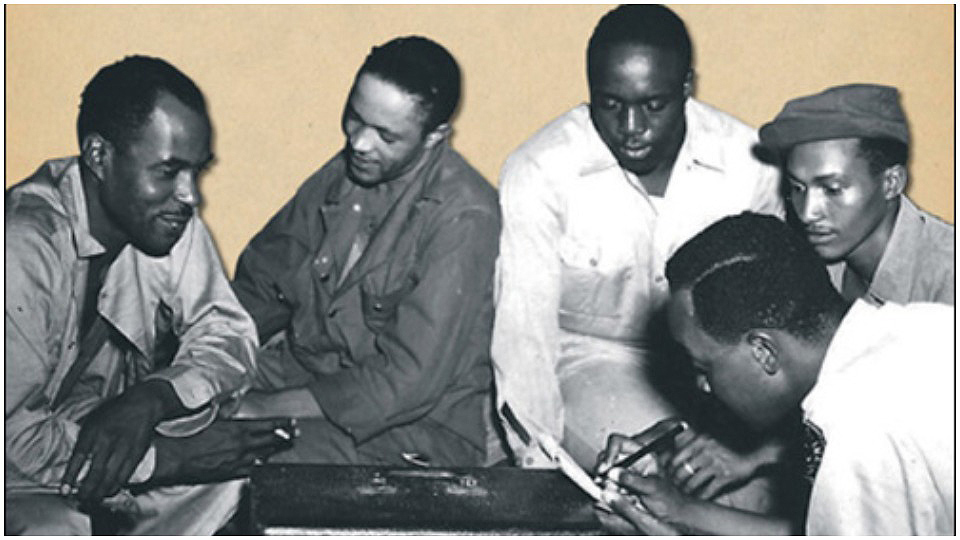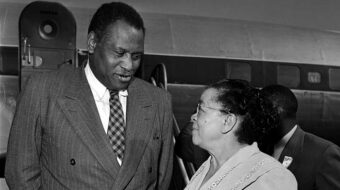
The rocky relationship between journalism and the struggle for African-American equality, like any other courtship, is full of ebbs and flows, fluctuations that often times mirror larger societal changes.
Exploring this relationship, in all its nuance and complexity, is especially important today as we try to discern and understand contemporary reality, a reality the Trump Administration increasingly attempts to obscure and mystify with its reliance on “alternative facts”—“facts” that oftentimes lack quantifiable, tangible evidence.
In this context, Fred Carroll’s new book Race News: Black Journalists and the Fight for Racial Justice in the Twentieth Century is a welcome addition to our understanding of both journalistic and African-American history.
Some historians have rightly begun to see the struggle for African-American equality through the lens of the “long Civil Rights revolution.” Thankfully, Carroll also sees the role of “race news” through the lens of a long struggle, and notes that early twentieth century “Commercial publishers proudly traced their lineage back to black journalism’s beginnings…to its very first newspaper, Freedom’s Journal, which was founded in 1827.”
He also notes that the “black news industry was owned, produced, and consumed primarily independent of white oversight,” thereby enabling black journalists to “package their mission of ending racial discrimination and securing citizenship rights within a profit-oriented, objective presentation of current events designed to cater to the many interests of the largest possible black readership.”
Like the white-owned press, however, race news wasn’t immune to politics. The influence of black editors—like the one-time socialist A. Philip Randolph, communist Cyril Briggs, or nationalist Marcus Garvey, for example—“among commercial journalists expanded or contracted as toleration for progressive politics shifted….” In short, race news was impacted and changed by world-altering events, i.e., the end of slavery, the Bolshevik Revolution, the Great Depression, World War, McCarthyism, 1960s and ’70s Civil Rights movements, and the grudging acceptance of black journalists into segregated newsrooms.
Carroll notes, though, that by the mid-1940s, and the emergence of the “Red Scare” and Cold War, the “alternative black press had effectively folded into an increasingly progressive commercial black press.” At the same time “the federal government and the white press” actively “worked to silence, or at least moderate, black journalists’ outspokenness,” especially their early support for the Soviet Union and socialism. Increasingly, black journalists, and the publications they wrote for, were “closely monitored” by the FBI and other governmental agencies, as African Americans continued their fight for equality during World War, claiming that racism—segregated military housing and training facilities, with African Americans relegated to service and labor roles, for example—weakened morale and hindered the war effort.
Perhaps ironically, large segments of the mainstream black press began to distance themselves from their most fervent allies—communists, or those aligned with communists—precisely when the long fight for equality and civil rights was reaching its crescendo. Prudent editors quickly began to realize that if they hoped to avoid the watchful and intrusive eye of the federal government—and reap the rewards of possible government support—it was best to challenge racism safely within the confines of patriotic capitalism, and not venture into the then ascending Red tide. This proved to be a delicate balancing act, however, especially as Pan-Africanism and National Liberation movements—aided by Soviet socialism and their domestic supporters, U.S. communists—were issues the black press were prone to provide substantial column space to, and which suggested the possibility for a different kind of power relations.
Insightfully, Carroll writes, “Communist tactics inspired new modes of journalistic agitation in black newspapers,” as black publications oftentimes “operated as passive and active agents of progressive reform,” especially since readers were interested in the work of communist-led groups, like the National Negro Congress and the Council on African Affairs, or movement leaders, like Paul Robeson and Benjamin Davis, Jr. Communists, or communist-influenced writers, he added, “enjoyed prestigious positions within the commercial black press” until the political winds shifted to Cold War and Red Scare; though communist-led journals, like Freedomways, continued to have considerable influence throughout the 1960s, ’70s and ’80s.
Needless to say, there is a lot of food for thought in Race News: Black Journalists and the Fight for Racial Justice in the Twentieth Century. This review has only touched on a few of the many aspects covered in Carroll’s insightful and timely book.
 Race News is highly recommended and should perhaps be read alongside Gerald Horne’s The Rise & Fall of The Associated Negro Press: Claude Barnett’s Pan-African News and the Jim Crow Paradox and Sonja Williams’ Word Warrior: Richard Durham, Radio, and Freedom.
Race News is highly recommended and should perhaps be read alongside Gerald Horne’s The Rise & Fall of The Associated Negro Press: Claude Barnett’s Pan-African News and the Jim Crow Paradox and Sonja Williams’ Word Warrior: Richard Durham, Radio, and Freedom.
Race News: Black Journalists and the Fight for Racial Justice in the Twentieth Century
By Fred Carroll
University of Illinois Press, 2017, 278 pages
Available in hardcover, paperback and eTextbook editions

MOST POPULAR TODAY

After months of denial, U.S. admits to running Ukraine biolabs

Ohio: Franklin County treasurer attends Netanyahu meeting, steps up Israel Bond purchases

‘Warning! This product supports genocide’: Michigan group aims to educate consumers

Hold the communism, please: SFMOMA’s Diego Rivera exhibit downplays artist’s radical politics

“Trail of Tears Walk” commemorates Native Americans’ forced removal






Comments